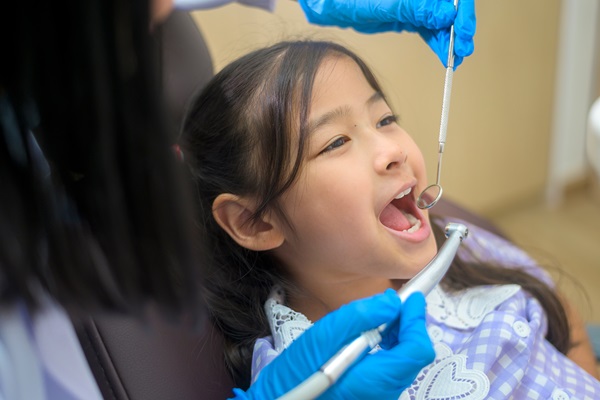7 Important Pediatric Dentist Treatments

Pediatric dentists are dental experts who have finished an additional course in dentistry to cater for children, especially those with special needs or who require gentler care.
Fluoridation
Cavities develop when the mineral components of the tooth enamel are compromised. Fluoride helps remineralize the decalcified areas to avert cavities. Community water is usually fluoridated to a certain level, and there are household products such as dental rinses and toothpaste that contain fluoride.
The dentist will check the child’s teeth growth to determine the appropriate level of fluoride to administer. Generally, the fluoride should be moderate: not too much or too little. Excess fluoride can cause fluorosis (white spots on the teeth), and fluoride deficiency can make the child’s teeth prone to decay.
Cavities
Tooth decay is a degenerative condition rampant among young children. The bacteria existing in the mouth combine with sugars from meals and beverages to form an acid that gradually degrades the tooth enamel and harms sensitive gum tissues. Without the enamel to protect the tooth, it becomes susceptible to cavities, which can cause nerve damage and premature tooth removal.
The pediatric dentist is qualified to treat cavities, especially before it worsens. If there is a case of a cavity, the dentist will restore the tooth with tooth-colored fillings. If the cavity is severe, the tooth may need to be extracted and replaced with a substitute.
Early orthodontic care
A pediatric dentist can detect cases of malocclusion (crooked or crowded teeth), teeth misalignments or bite issues and correct the problem as the teeth erupt in the mouth. Early care prevents costly orthodontic care in the future. Through regular examination, the dentist will be able to monitor the development of the child’s teeth and jaw.
Dental cleaning (prophylaxis)
When you visit the dentist, the dental hygienist or dentist will evaluate the child’s dental records to ensure the office is up to date with the progress and changes in the child’s oral structure. Afterward, the teeth will be cleaned thoroughly to eliminate traces of plaques and calculus (hard/calcified tartar) that may cause gum disease or tooth cavity. When the cleaning is complete, the dentist will apply fluoride to further strengthen the teeth’s weak areas against decay.
Sealants
Sealants are thin sheets of plastic coating placed on the chewing surfaces of the molars and premolars to prevent tooth decay. The grooves of the back tooth tend to trap food debris that eventually turn to plaque and are usually the most susceptible areas for cavities.
Together with fluoride, sealants can help ensure that the child’s teeth is impervious to decay. Typically, sealants can function up to five or 10 years with proper oral hygiene. During your child’s routine dental appointment, the dentist will check the sealant to ensure that it is intact.
Extractions
Tooth extractions are considered the final resort when the tooth has decayed beyond fillings. Sometimes tooth extraction may be necessary to fix overcrowded teeth and give space for other teeth to form correctly. Proper alignment of the primary teeth is essential to ensure the permanent teeth develop correctly.
Tooth-colored fillings (composite resin)
This procedure is essential when the teeth are damaged due to injury or decay. Tooth-colored fillings help restore the cosmetic appeal of the teeth; therefore, the color has to match the tooth’s natural color as much as possible.
Request an appointment here: https://www.grandparkwaypediatricdental.com or call Grand Parkway Pediatric Dental at (832) 579-0960 for an appointment in our Richmond office.
Check out what others are saying about our services on Yelp: Read our Yelp reviews.
Recent Posts
Pediatric dental patients with chipped or broken teeth have more options for tooth repair than in the past, such as composite fillings. These dental fillings can both restore a tooth and prevent the increased chance of gaps in the smile or shifting teeth that usually follows a tooth extraction. They can also provide a natural-looking…
A pediatric root canal can help preserve a child's oral health and prevent further complications when a tooth becomes damaged or infected. A dentist will determine if treatment is necessary based on symptoms and an examination. Understanding the signs of infection and the treatment process can help parents make the best decision for their child's…
Created with quartz or glass and using a resin medium, composite fillings are quickly becoming the go-to for many pediatric dentists. The fillings restore functionality to broken teeth by allowing the patient to bite or chew without pain. In addition, because the fillings look like natural teeth, they may help with self-esteem in relation to…
Dental caries, commonly known as tooth decay or cavities, are a prevalent dental problem among children. Composite fillings are one great solution to this often painful and sensitive issue. Composite fillings work to stop tooth decay in its tracks while still allowing filling recipients to maintain a more natural-looking smile.Composite fillings, composite resin fillings, or…


